
|
Navigate |
| Home |
| Kirstie Alley |
| Our 30th Anniversary |
| Never Turning Back |
| Narconon Endorsements |
| |
|
|
| |
|
|
| |
|
Facts About Drugs |
| FAQ About Ambien |
| FAQ About Ativan |
| FAQ About Cocaine |
| FAQ About Codeine |
| FAQ About Crack |
| FAQ About Darvocet |
| FAQ About Dexedrine |
| FAQ About Demerol |
| FAQ About Dilaudid |
| FAQ About Ecstasy |
| FAQ About GHB |
| FAQ About Heroin |
| FAQ About Hydrocodone |
| FAQ About Ketamine |
| FAQ About Lortab |
| FAQ About LSD |
| FAQ About Marijuana |
| FAQ About Morphine |
| FAQ About Meth |
| FAQ About Methadone |
| FAQ About Opiates |
| FAQ About Opium |
| FAQ About Oxycontin |
| FAQ About Percocet |
| FAQ About Percodan |
| FAQ About Ritalin |
| FAQ About Rohypnol |
| FAQ About Ultram |
| FAQ About Valium |
| FAQ About Vicodin |
| FAQ About Xanax |
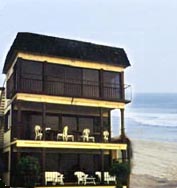 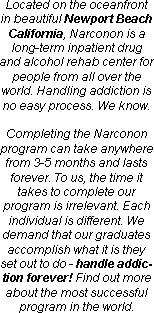 |
|
Resources |

|


 Print this article |  Send this article to a friend |  Add to Favorites |
FAQ
About Hydrocodone
Q) What is Hydrocodone?
A) Hydrocodone is an effective antitussive (anti-cough) agent, and as an opiate it is also an effective analgesic for mild to moderate pain control. Five mg of Hydrocodone is equivalent to 30 mg of codeine when administered orally. Early comparisons concluded that Hydrocodone and morphine were equivalent for pain control in humans. However, it is now considered that a dose of 15 mg (1/4 gr) of Hydrocodone is equivalent to 10 mg (1/6 gr) of morphine. Hydrocodone is considered to be morphine-like in all respects.
There are over 200 products containing Hydrocodone in the U.S. In its most usual product forms Hydrocodone is combined with acetaminophen (Vicodin, Lortab), but it is also combined with aspirin (Lortab ASA), ibuprofen (Vicoprofen), and antihistamines (Hycomine). Both tablet and liquid forms of Hydrocodone are available (e.g., Tussionex) Hydrocodone will react as a normal opiate in the available field test kits.
Hydrocodone is abused for its opiate-like effects. It is equivalent to morphine in relieving abstinence symptoms from chronic morphine administration. The Schedule III status of Hydrocodone-containing products has made them available to widespread diversion by "bogus call-in prescriptions" and thefts. Three dosage forms are typically found (5, 7.5, and 10 mg) and their behavioral effects can last up to 5 hours. The drug is most often administered orally. The growing awareness and concern about AIDS and blood-borne pathogens easily transmitted by syringe needle use, has made the oral bioavailability of Hydrocodone attractive to the typical opiate abuser.
As
with most opiates, the adverse effects of Hydrocodone abuse are dependence and
tolerance development. Its co-formulation with acetaminophen has also increased
the likelihood of acetaminophen-induced hepatic necrosis with high dose acute
dosing, but slow escalation of dose over time seems to protect the liver during
high dose chronic exposures seen with this drug.
Q) How is Hydrocodone used?
A) Hydrocodone when abused is taken orally, chewed, crushed (then snorted like cocaine), or crushed (then dissolved in water and injected like heroin).
Hydrocodone-containing
products are in tablet, capsule and liquid forms. A variety of colors, markings,
and packaging are available.
The major source of Hydrocodone to the street
has been through bogus call-in and forged prescriptions, professional diversion
through unscrupulous pharmacists, doctors, and dentists, and large-scale thefts.
The pills have been sold for $2 to $10 per tablet and $20 to $40 per 8 oz bottle
on the street.
Q) What are the effects of Hydrocodone?
A)
| anxiety |
constipation |
decreased
mental & physical performance |
| difficulty
breathing | difficulty urination | dizziness |
| drowsiness | dry throat | emotional dependence |
| exaggerated
feeling of depression | extreme calm (sedation) | exaggerated sense of well-being |
|
fear | itching | mental clouding |
|
mood
changes | nausea & vomiting | rash |
| restlessness | sluggishness | tightness in chest |
Q) Can you overdose on Hydrocodone?
A) Yes, overdose of Hydrocodone can be fatal. If you suspect an overdose, seek emergency treatment immediately. Symptoms of a Hydrocodone overdose include:
- bluish tinge to skin
- cold clammy skin
- extreme sleepiness
- heavy perspiration
- limp muscles
- nausea & vomiting
- slowed heartbeat or slowed breathing
Q) Is Hydrocodone addictive?
A) Yes, there has been an increasing trend of abuse in non-Chronic Pain suffering persons. The abuser of these drugs has been shown not to be the inner city youth, but instead a famous actor, a suburban real estate agent, or your next door neighbor. First time abuse of these drugs has been surging, most commonly with the oxycodone and Hydrocodone type painkillers. The two differ slightly in their chemical makeup but have a similar effect on the body.
Every age group has been affected by the relative ease of Hydrocodone availability and the perceived safety of these products by professionals. Sometimes seen as a "white-collar" addiction, Hydrocodone abuse has increased among all ethnic and economic groups. DAWN data demographics suggest that the most likely Hydrocodone abuser is a 20-40 yr. old, white, female, who uses the drug because she is dependent or trying to commit suicide. However, Hydrocodone-related deaths have been reported from every age grouping.
Q) What are other medications that include Hydrocodone?
A)
BRAND NAMES (of Hydrocodone with Acetaminophen):
Allay; Amacodone; Anexsia;
Anolor Dh 5; Bancap-HC; Co-Gesic; Dolacet; Dolagesic; Dolphen; Duocet; Gesic 5;
Hy-5; Hy-Phen; Hyco-Pap; Hycomed; Hycotab; Hydrocet;
Hydrocodone w/Acetaminophen; Hydrogesic; Lorcet; Lorcet 10/650; Lorcide Panseals; Lortab; Margesic; Medipain 5; Megagesic; Megamor; Norcet; Oncet; Panacet; Polygesic; Propain Hc; Ro-Codone; Rogesic #3; Senefen III; Stagesic; Tycolet; Ultragesic; Vanacet; Vapocet; Vendone; Vicodin; Vicodin ES; Zydone
Hydrocodone w/Ibuprofen; Vicoprofen
Q) What are the statistics of Hydrocodone abuse?
A) Hydrocodone abuse has been escalating over the last decade. There has been large scale diversion of Hydrocodone. For example, an estimated 7 million dosage units were diverted in 1994 and over 11 million in 1997. In 1998 there were over 56 million new prescriptions written for Hydrocodone products and by 2000 there were over 89 million. From 1990 the average consumption nationwide has increased by 300%. In the same period there has been a 500% increase in the number of Emergency Department visits attributed to Hydrocodone abuse with 19,221 visits estimated in 2000. In 1997, there were over 1.3 million Hydrocodone tablets seized and analyzed by the DEA laboratory system. A recent petition submitted to the DEA has requested a review of the control status of all Hydrocodone-containing products.
Painkiller becomes legal drug of choice
By EMILY RICHMOND,
Las Vegas Sun
LAS
VEGAS (September 16, 2001 1:48 p.m. EDT) - When she needed a fix, Helene would
flip through the yellow pages, looking for a doctor she had not yet fooled.
Addicted
to hydrocodone, a powerful prescription painkiller, Helene became an expert at
"doctor shopping" - visiting numerous physicians to obtain multiple
prescriptions.
"You
go to the doctor and say your back hurts, that was always good for a few refills,"
said the Las Vegas woman, whose name has been changed to protect her privacy.
"Supply was never a problem."
The
state Board of Pharmacy's prescription drug-abuse task force, which monitors drug
prescriptions, eventually caught on. The board sent warning letters to all of
the pharmacies and doctors that Helene had visited, along with a printout of her
prescription history.
"One of my doctors told me I had been flagged
by the state," Helene said. "He told me to be careful, and said I could
get in a lot more trouble than he would. And then he wrote me another prescription
anyway."
Hydrocodone
- a mix of synthetic codeine and acetaminophen - is the most abused prescription
drug in the United States, according to the Drug Enforcement Administration.
The
painkiller tops the list of abused pharmaceuticals in El Paso, Texas; New York
City; San Diego; St. Louis; Atlanta; Chicago; Dallas; and Miami. It's known as
Vicodin, Percocet, Lortab or Lorcet, and the roster of celebrities who have admitted
addictions includes Green Bay Packers quarterback and three-time NFL Most Valuable
Player Brett Favre, actor Matthew Perry and model Niki Taylor.
Nevada
doctors in 2000 wrote prescriptions for more than 42 million doses of hydrocodone
- or about 17 pills for every adult in the state.
In most cases, patients
receive a single prescription for eight to 12 pills after dental surgery or because
of an injury, according to the task force. The so-called doctor shoppers are less
common, but are believed to be a significant portion of the hydrocodone prescriptions.
For people with chronic, debilitating pain, hydrocodone can mean the difference
between being able to function and being bedridden, doctors say.
"There's
no question hydrocodone is effective, when properly prescribed, and can provide
immediate relief," said Dr. Godwin Maduka, a pain-management specialist and
anesthesiologist at University Medical Center. "But we also know there's
a tremendous level of abuse occurring."
There's
a difference between developing a tolerance for a drug and physical addiction,
Maduka said. Tolerance occurs when a medication is no longer effective at reducing
pain, even when a patient increases the dosage. Physical addiction occurs when
a patient has been on a certain medication for such a lengthy period that they
go through symptoms of withdrawal if they stop taking it.
Maduka,
also a pharmacist, said by the time most patients arrive at his Las Vegas Pain
Institute, they've visited a long list of primary-care doctors. Most pain patients
are not abusers, but have simply developed a tolerance for medications and need
additional help, he said.
It's the doctor shoppers who are at the greatest
risk, Maduka said.
"We
have no real way of knowing how many doctors a patient has seen before us, how
many other prescriptions they have in their pocket," Maduka said.
One
solution would be a centralized database in which doctors and pharmacists could
look up a patient's history before writing or filling new prescriptions, Maduka
said. The state task force's reports are helpful, but are only triggered after
a patient has visited numerous physicians, Maduka said.
Helene
was introduced to prescription painkillers through legitimate means. After dental
surgery in the mid-1980s, her dentist prescribed a painkiller. She discovered
the pills numbed her physical pain and gave her a sense of well-being. For the
next 15 years, she struggled to get out of the drug's grasp. When her husband
said he worried about how many pain pills she was taking, Helene cut back. She
even tried quitting, but the night sweats, nausea and chills - symptoms of her
withdrawal - always won out.
"You
think of drug addicts as being out on street corners," Helene said. "I'm
a housewife."
Tylenol is the nation's most popular over-the-counter
painkiller - 8 billion to 9 billion tablets are sold each year - and the most
common form of acetaminophen used in hydrocodone manufacturing.
"Hydrocodone
is a very good medicine if you're having pain, but no one realized it would have
such a high potential for abuse," said Dr. Caroline Riely, associate medical
director of the American Liver Foundation. "It's the codeine portion of the
drug that's addictive, but it's the acetaminophen that's destroying peoples' livers."
Experts
say adults should not take more than four grams of acetaminophen each day; just
10 grams can cause lifelong liver problems or even death. Most hydrocodone pills
come in either 2.5, 5 or 7.5 milligrams of synthetic codeine, each mixed with
500 milligrams of acetaminophen.
At the height of her addiction, Helene took
up to 30 hydrocodone pills each day - nearly four times the recommended limit
for acetaminophen.
"I know how lucky I am to still have a liver that
works," Helene said. "Given everything I've done to myself, I shouldn't
still be here at all."
The state prescription-drug task force wants
the pharmaceutical companies to reduce the amount of acetaminophen in each hydrocodone
pill, a request echoed by medical professionals across the nation. In response,
at least one pharmaceutical company is now making a hydrocodone pill with 250
milligrams of acetaminophen.
McNeil
Consumer Products Co., a subsidiary of Johnson & Johnson, the company that
manufactures Tylenol, has added new warning labels about acetaminophen's potential
for damaging the liver, especially when the drug is mixed with alcohol.
The
DEA's prescription-drug classification system is based on the potential for abuse.
Schedule I drugs include heroin and Ecstasy, which are both illegal in the United
States. Schedule II drugs include powerful painkillers, such as codeine, morphine
and Demerol. Cocaine is a Schedule II drug because it has some legitimate medical
applications in hospital settings. Schedule III drugs include hydrocodone and
anabolic steroids.
Schedule
III drugs are easier to prescribe and ultimately easier to get. A doctor is permitted
to phone in a Schedule III prescription refill to a pharmacy. Schedule II refills
may only be written after the doctor re-examines the patient. The DEA also requires
more stringent record-keeping of Schedule II prescriptions, and it tracks how
many each doctor writes.
Florida,
another state battling the hydrocodone epidemic, tried last year to reclassify
the drug as a Schedule II. But the new rules were quickly derailed by protests
from pharmacists, physicians and patients who said it would make it unreasonably
difficult for people to manage day-to-day pain. Florida's attorney general took
the unusual step of passing an emergency ordinance, restoring hydrocodone's status
as a Schedule III drug.
Nine
years ago the Nevada Board of Pharmacy considered moving hydrocodone to Schedule
II, but ended up voting against the plan, according to its attorney, Louis Ling.
The
argument that "carried the day" for the board was doctors' testimony
that moving hydrocodone to Schedule II would make it unreasonably difficult for
patients in rural areas to get refills, Ling said.
They
call it the Las Vegas Cocktail, but you won't find it served at hotel bars or
table-side in the casinos. A potent mix of hydrocodone and the muscle relaxer
Soma gives the user a heroin-like euphoria without needle marks. It's also one
of the most popular recreational drug combinations in the United States.
The
street value of the cocktail's ingredients is high. One former Las Vegas physician-turned-dealer
made as much as $1 million selling the drugs on the black market, according to
federal prosecutors.
Luisito
Evangelista, banned from practicing medicine in Nevada, used his Illinois DEA
registration to buy more than 500,000 hydrocodone pills. Evangelista, who pleaded
guilty to drug trafficking in 1999, died in a federal prison last year.
Soma
is the nation's most abused non-controlled substance, according to the DEA. Nevada's
pharmacy board is considering reclassifying it, making it more difficult for addicts
to gather the cocktail's ingredients.
Because
Soma isn't a scheduled narcotic, Nevada officials aren't sure how many prescriptions
are being written each year.
"If we do schedule Soma and start to track
it, we expect the numbers to match those for hydrocodone," Ling said. "And
we know the two being used together can be a hallmark of abuse."
If you have a problem with hydrocodone addiction call Narconon Southern California drug rehab center, we can help 1800 US NO DRUGS
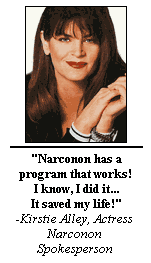
comment corner
 |
| drug rehabilitation saving taxpayers |
California taxpayers are saving more money than expected due to ... |
 |
| Study: Marijuana Causes Lung Damage |
New research finds that smoking three or four marijuana cigarettes ... |
 |
| Thanks to Online Pharmacies, Addiction Can Be Just a Click Away |
WASHINGTON -- Kelly Knable, a 34-year-old mother of three from ... |
 |
| Balancing pain and drug addiction |
Over the past two decades, two conflicting medical ideas have ... |
 |
| Clean break |
... |
 |
| State officials create prescription drug abuse task force |
TALLAHASSEE, Fla. -- State officials on Friday announced the creation ... |
 |
| Florida system often fails to catch Medicaid abuse at source |
FORT LAUDERDALE, Fla. - (KRT) - The victim's skin was ... |
 |
| Marijuana's rising threat: For more kids, use turns into addiction |
John Brown experimented with marijuana at age 10, and it ... |
 |
| Student gets state prison term for selling marijuana |
EASTON -- David Messina had his whole life ahead of ... |
 |
| Man charged in cocaine case forfeits $585,000 |
An Iowa truck driver arrested by Kentucky Vehicle Enforcement officers ... |
 |
| Cocaine Curtails Body's Ability to Cool Off |
In addition to triggering life-threatening cardiovascular episodes, cocaine can be ... |
 |
| Science for Cops |
I admit it: I'm a Law & Order fan. ... |
 |
| New Gene Therapy Could Help Quell Alcoholic Cravings |
One prevailing view of addiction holds that alcohol and other ... |
 |
| One Dose of Cocaine Primes the Brain for Addiction |
It isn't a myth: one dose of cocaine is all ... |
 |
| Marijuana Firmly Linked to Infertility |
Scientists from the University of Buffalo have smoked out what ... |
 |
| Moderate Alcohol Consumption Clouds Brain's Ability to Detect Mistakes |
It's common knowledge that a brain on booze doesn't function ... |
|
Narconon Pictures |
|
 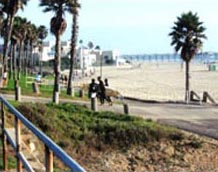 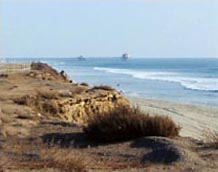 |
|